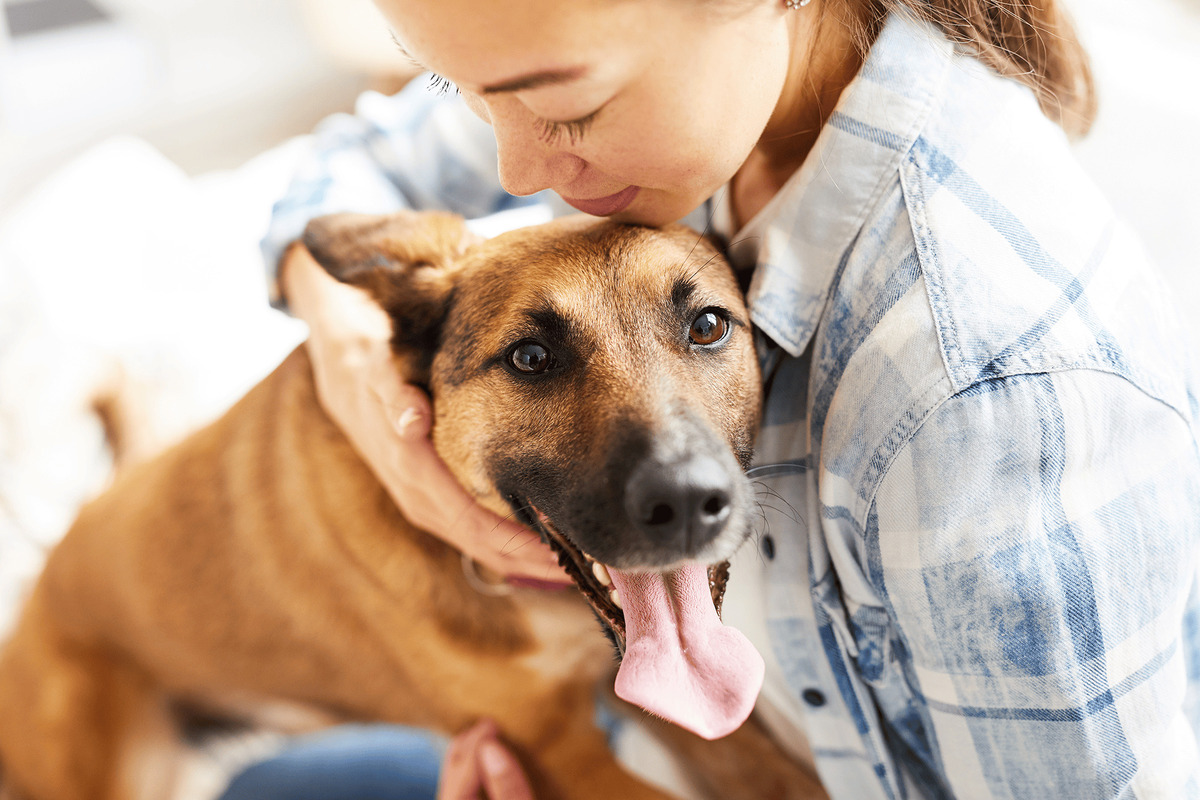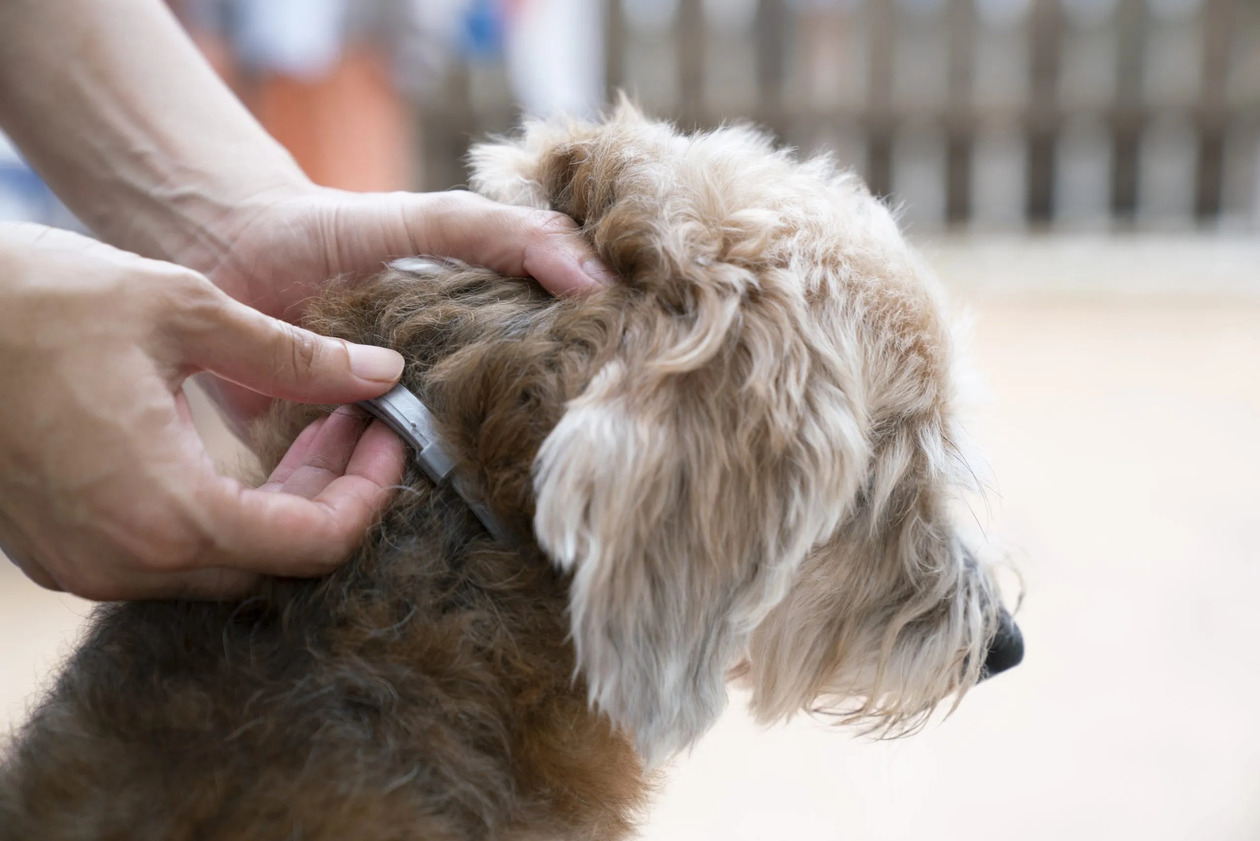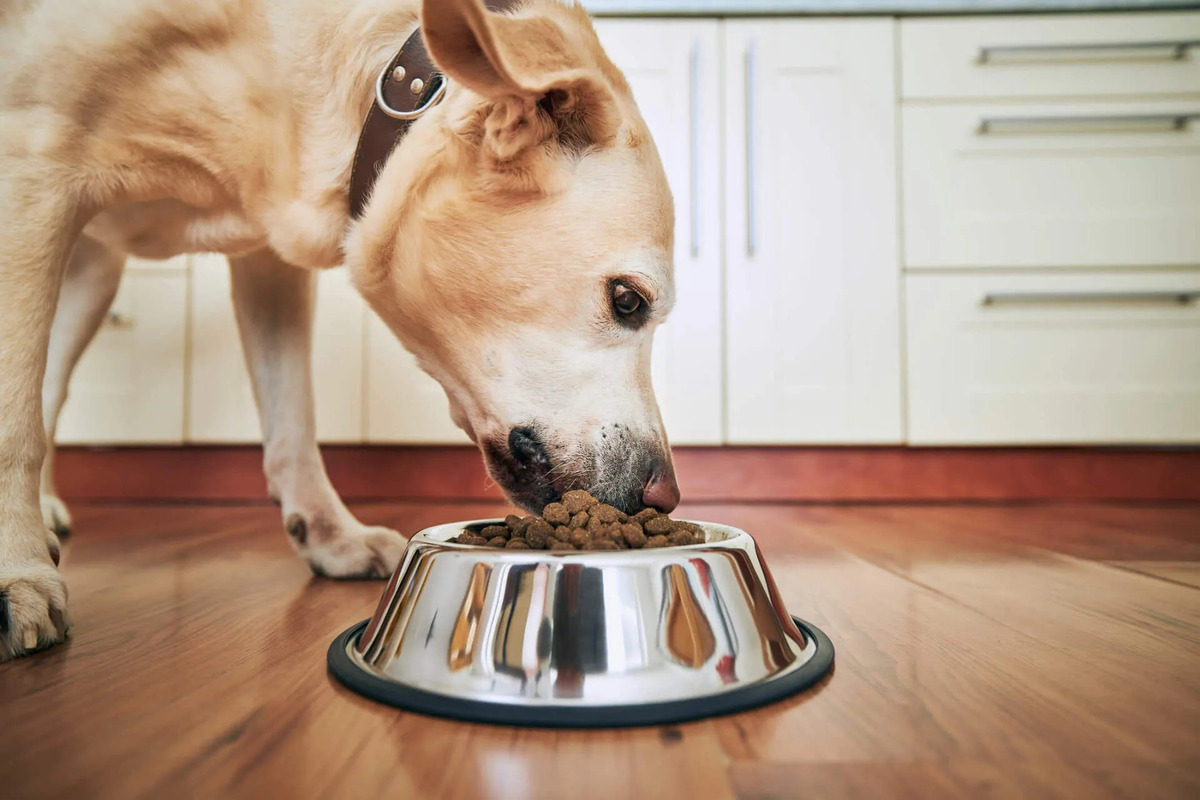Home>Health & Wellness>Nutrition & Diet>How Long Does It Take For A Dog To Adjust To A New Diet?


Nutrition & Diet
How Long Does It Take For A Dog To Adjust To A New Diet?
Published: January 28, 2024
Discover how long it takes for a dog to adjust to a new diet and get expert tips on nutrition and diet for your furry friend. Learn more about the transition process.
(Many of the links in this article redirect to a specific reviewed product. Your purchase of these products through affiliate links helps to generate commission for Pawsomeoldies.com, at no extra cost. Learn more)
Table of Contents
Introduction
Introducing a new diet to your furry friend can be a significant change that requires patience and understanding. Just like humans, dogs need time to adapt to new foods, and the adjustment period can vary from one pup to another. Understanding the factors that influence this adjustment and recognizing the signs that indicate a successful transition are essential for pet owners. Additionally, implementing strategies to support your dog during this transition can make the adjustment period smoother and more comfortable for your beloved companion. In this article, we will explore the intricacies of how long it takes for a dog to adjust to a new diet, shedding light on the various factors that come into play, the signs that indicate successful adaptation, and practical tips to help your dog through this process. Understanding these aspects will empower you to navigate the transition with confidence and ensure the well-being of your canine companion.
Factors Affecting Adjustment Period
The adjustment period for a dog transitioning to a new diet can be influenced by several factors, each playing a crucial role in determining the duration and ease of the transition. Understanding these factors is essential for pet owners to manage their expectations and support their furry friends effectively.
1. Previous Diet and Health History
The dog's previous diet and health history can significantly impact the adjustment period. If the dog has been consuming a consistent diet for an extended period, introducing a new diet may require more time for the digestive system to adapt. Additionally, dogs with pre-existing health conditions may need a longer adjustment period to ensure the new diet aligns with their specific dietary requirements.
2. Age and Breed
Age and breed are important factors to consider when assessing the adjustment period. Puppies and senior dogs may have more sensitive digestive systems, making the transition to a new diet a gradual process. Furthermore, certain breeds may have specific dietary sensitivities or preferences, influencing how quickly they adapt to a new food regimen.
3. Type of Diet Change
The nature of the diet change also plays a significant role in the adjustment period. Switching between different types of diets, such as dry kibble to raw food or homemade meals, can impact the transition duration. Moreover, the introduction of new ingredients or a shift in nutrient composition can affect how quickly a dog adapts to the new diet.
4. Gradual vs. Abrupt Transition
The method of introducing the new diet can affect the adjustment period. Gradually transitioning by mixing the new food with the old over a period of days allows the dog's digestive system to acclimate more smoothly. Conversely, an abrupt change may lead to digestive upset and a longer adjustment period.
5. Individual Sensitivities
Every dog is unique, and individual sensitivities to certain ingredients or textures can influence the adjustment period. Some dogs may readily embrace a new diet, while others may exhibit reluctance or digestive disturbances, necessitating a longer transition period to ensure their comfort and well-being.
By considering these factors, pet owners can gain insight into the complexities of the adjustment period when introducing a new diet to their canine companions. Recognizing the individuality of each dog and being attentive to their specific needs is paramount in facilitating a successful transition to a new diet.
Signs of Adjustment
Recognizing the signs that indicate your dog is successfully adjusting to a new diet is crucial for pet owners. These indicators provide valuable insights into your dog's physical and emotional response to the dietary change, allowing you to gauge the effectiveness of the transition process. Here are the key signs to look for:
1. Consistent Appetite and Eating Behavior
A positive sign of adjustment is when your dog consistently displays a healthy appetite and demonstrates enthusiasm during mealtimes. This includes eagerly approaching their food bowl, maintaining a steady eating pace, and showing interest in the new diet without signs of reluctance or disinterest.
2. Digestive Regularity
Observing regular and healthy bowel movements is an important indicator of successful adjustment. A well-adjusted dog will exhibit normal stool consistency and frequency, signaling that their digestive system is effectively processing and assimilating the new diet.
3. Improved Energy Levels and Vitality
As your dog adapts to the new diet, you may notice an enhancement in their overall energy levels and vitality. This can manifest through increased playfulness, alertness, and a general sense of well-being, indicating that the new diet is providing the necessary nutrients to support their physical and mental health.
4. Healthy Coat and Skin
A glossy and lustrous coat, along with healthy skin, signifies that your dog is benefiting from the new diet. Improved coat quality, reduced shedding, and the absence of skin irritations or dryness are positive indications of successful dietary adjustment.
5. Stable Weight Management
Monitoring your dog's weight during the adjustment period is essential. A well-adjusted diet should support stable weight management, preventing drastic fluctuations in body weight and ensuring that your dog maintains a healthy and appropriate physique.
6. Balanced Behavior and Mood
Successful dietary adjustment can positively impact your dog's behavior and mood. Look for signs of contentment, reduced irritability, and overall balanced behavior, indicating that the new diet is supporting their emotional well-being.
7. Enhanced Overall Health
Ultimately, a successfully adjusted dog will exhibit improved overall health, including better immune function, dental health, and a reduced likelihood of digestive issues or food sensitivities.
By attentively observing these signs, pet owners can gain valuable insights into their dog's response to the new diet, enabling them to make informed decisions and adjustments as needed to ensure their furry companion's well-being.
Tips for Helping Your Dog Adjust
Supporting your dog during the transition to a new diet is essential for ensuring a smooth and successful adjustment process. By implementing the following tips, you can provide the necessary support and guidance to help your canine companion adapt comfortably to their new food regimen.
-
Gradual Transition: Introduce the new diet gradually by mixing it with the previous food over a period of 7-10 days. Start with a small proportion of the new food and gradually increase the ratio while decreasing the old food. This gradual transition allows your dog's digestive system to acclimate to the new diet, minimizing the likelihood of digestive upset.
-
Consistency and Patience: Maintain consistency in feeding times and portions to establish a routine for your dog. Be patient throughout the adjustment period, understanding that every dog adapts at their own pace. Avoid making frequent changes to the diet during this period to provide stability and support the adjustment process.
-
Monitor and Observe: Keep a close eye on your dog's eating behavior, bowel movements, energy levels, and overall well-being during the transition. Regular monitoring allows you to assess their response to the new diet and identify any signs of discomfort or digestive disturbances that may require attention.
-
Hydration: Ensure that your dog has access to fresh and clean water at all times, especially during the adjustment period. Proper hydration supports the digestive process and overall health, aiding in the transition to the new diet.
-
Seek Veterinary Guidance: Consult your veterinarian before initiating a diet change for your dog. They can provide valuable insights based on your dog's specific health needs, dietary requirements, and any underlying conditions that may influence the adjustment period. Veterinary guidance is particularly crucial for dogs with existing health concerns or specialized dietary needs.
-
Quality Nutrition: Select a high-quality and nutritionally balanced diet for your dog's new food regimen. Consider factors such as age, breed, activity level, and any specific dietary sensitivities or allergies when choosing the appropriate diet. A well-balanced and nutritious diet forms the foundation for a successful transition.
-
Positive Reinforcement: Encourage and praise your dog during mealtimes to create a positive association with the new diet. Positive reinforcement can help alleviate any initial reluctance and foster a favorable attitude towards the new food.
-
Gradual Treat Introduction: If treats are part of your dog's diet, introduce new treats gradually alongside the new food to ensure consistency and minimize potential digestive disruptions.
By implementing these tips, pet owners can play a proactive role in supporting their dog's adjustment to a new diet, fostering a positive and comfortable transition that promotes their furry friend's overall well-being.
Conclusion
In conclusion, the process of transitioning a dog to a new diet is a multifaceted journey that requires careful consideration, patience, and attentiveness from pet owners. Understanding the various factors that influence the adjustment period, such as the dog's previous diet and health history, age, breed, the nature of the diet change, and individual sensitivities, provides valuable insight into the complexities of this transition. By recognizing these factors, pet owners can tailor the adjustment process to suit their dog's specific needs, ensuring a smoother and more comfortable transition.
Moreover, being attuned to the signs of successful adjustment, including consistent appetite and eating behavior, digestive regularity, improved energy levels, healthy coat and skin, stable weight management, balanced behavior and mood, and enhanced overall health, empowers pet owners to gauge their dog's response to the new diet effectively. These indicators serve as valuable benchmarks, allowing pet owners to make informed decisions and adjustments as needed to support their dog's well-being throughout the transition period.
Furthermore, the practical tips for helping dogs adjust to a new diet provide actionable guidance for pet owners, emphasizing the importance of a gradual transition, consistency, patience, monitoring, hydration, veterinary guidance, quality nutrition, positive reinforcement, and gradual treat introduction. By implementing these tips, pet owners can actively support their dog's adjustment process, fostering a positive and comfortable transition that prioritizes their furry companion's overall health and happiness.
Ultimately, the successful adjustment of a dog to a new diet is a collaborative effort between pet owners and their beloved canine companions. By approaching the transition with empathy, understanding, and a proactive mindset, pet owners can navigate this process with confidence, ensuring that their dogs receive the necessary support and care to thrive on their new dietary regimen. With a deep understanding of the adjustment period, coupled with attentive observation and proactive measures, pet owners can facilitate a seamless transition that sets the foundation for their dog's long-term health and well-being.












